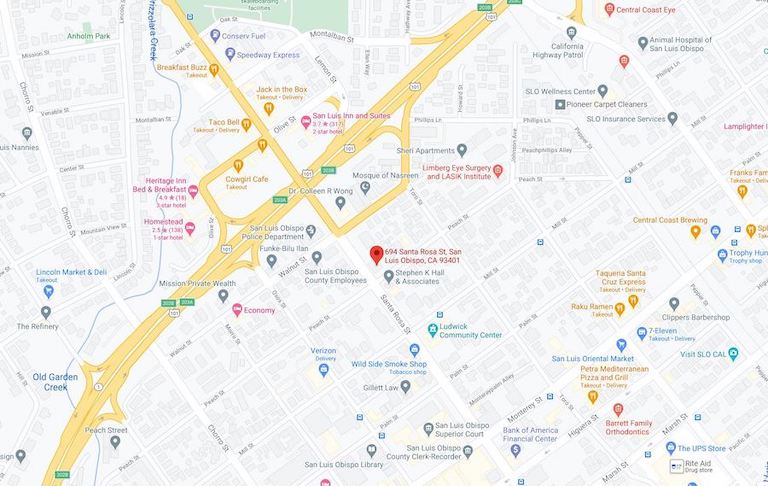Americans with Disabilities Act (“ADA”)
Since its initial enactment in 1990, the Americans with Disabilities Act (“ADA”) has been a source of much litigation. Historically, ADA litigation focused on access to brick-and-mortar businesses and the alleged lack of adequate facilities for individuals with disabilities. Recently, however, there has been a substantial increase in the number of lawsuits filed against businesses, large and small, for alleged violations of the ADA related to website access. These ADA lawsuits allege, in effect, that: (i) private company websites qualify as places of public accommodation; and (ii) websites with access barriers deny persons with disabilities their right to equal access. These legal proceedings have also challenged the accessibility of mobile applications and online job application interfaces.
ADA Lawsuits
Plaintiffs’ attorneys have turned these ADA lawsuits into what could be described as a cottage industry. It is not uncommon for a single attorney or law firm, and the same disabled individual, to file dozens or more lawsuits against companies alleging technical violations of the ADA related to access to the companies’ websites and seeking injunctive relief and damages. While all types of businesses across multiple industries have been the targets of these types of lawsuits, the industries that have recently seen the most increase in this area are some of the most critical to our local economy – hotels, restaurants, wineries, retail stores, healthcare companies and e-commerce companies.
Title III of the ADA requires that private sector businesses that serve as “places of public accommodation” remove “access barriers” to persons with disabilities, when those individuals are accessing the goods or services of that business. Title III does not specifically identify or address whether “places of public accommodation” include websites, mobile applications or other web-based technologies, but it also does not expressly limit its coverage to brick-and-mortar locations or exclude online locations.
What makes these lawsuits difficult for businesses and their insurers is that courts around the country treat these cases differently with respect to the technical requirements of the ADA. One of the main reasons for this lack of consistency in the courts is the lack of any substantive guidance provided by either Congress or the Department of Justice (“DOJ”), the primary federal government agency responsible for enforcing the ADA, on the scope of the ADA with respect to website accessibility compliance for non-public entities.
“Places of Public Accommodation”
Businesses trying to make a determination of whether their websites or mobile applications are “places of public accommodation” will need to consider which Circuit Court would hear a potential case against that business. California is in the 9th Circuit, which, along with the Third, Sixth and Eleventh Circuit Courts of Appeal, have held that places of public accommodation must be physical places, but that goods and services provided by a public accommodation, which may include a website, could possibly fall within the ADA if there is a sufficient connection to a physical location.
In fact, a recent ruling by the 9th Circuit Court of Appeal, filed in January of this year, determined that the ADA “mandates that places of public accommodation [in this case Domino’s Pizza’s online ordering application] provide auxiliary aids and services to make visual materials available to individual who are blind.” In that case, a blind individual was unable, after two attempts, to order a customized pizza online from a nearby Domino’s. The court held that, even though Domino’s customers primarily accessed the website away from a Domino’s physical restaurant, the ADA applies to the services provided by that physical location and not just the location itself. Because the website connected customers to the goods and services provided by the physical location of the business, that website was also subject to the provisions of the ADA. While Domino’s is asking the United States Supreme Court to review the case, the case will continue to be cited by Plaintiffs’ counsel in California as a basis for lawsuits against businesses that provide goods and services to their customers through their websites and mobile applications.
Businesses with a physical location (and even those without) seeking to minimize the risks of the onslaught of consumer protection litigation, for which California is well known, should take note of and review with their web development teams with respect to ADA web compliance – the Web Content Accessibility Guidelines (“WCAG”) 2.0 Level AA, published by the World Wide Web Consortium (“W3C”). This standard is heavily relied upon by both courts and the DOJ to determine the level of ADA website compliance, and may well be the base standard adopted as final regulations. With respect to the standard itself, the WCAG outlines the following four principles for accessible design of a website:
- Perceivable – meaning that users must be able to perceive the information being presented;
- Operable – meaning that users must be able to operate the interface;
- Understandable – meaning that users must be able to understand the information as well as the operation of the user interface; and,
- Robust – meaning that users must be able to access the content as technologies advance.
What are the Levels of WCAG Compliance?
Within the WCAG, there are multiple levels of compliance. They include the following:
- Level A (WCAG 2.0 A), the minimum level of conformance;
- Level AA (WCAG 2.0 AA), the level generally relied upon by the DOJ and the courts to determine ADA compliance;
- Level AAA (WCAG 2.0 AAA) the maximum level of compliance; and,
- A conforming alternative version of a non-conforming page that satisfies at least one of the above levels in full.
It should be noted that the W3C released updates to each of the compliance levels with WCAG 2.1 in June of 2018. While this release has caused some confusion in the business community about which standard applies, a business should be less concerned about following a set of guidelines and should instead focus its efforts on determining whether, for example, visually impaired person would be able to access the company’s goods, services, and benefits through its website.
Businesses Must Assess Technical Issues
Businesses seeking to quickly assess technical issues with their websites can consult various free tools and browser applications that pinpoint, in real time, areas of websites that may limit access to the blind or visually impaired and thus expose the business to potential ADA lawsuits. For example webAIM.org provides a free web accessibility (WAVE) tool for such a purpose.
In addition to checking a website’s risks for alleged violations of the ADA, there are also qualified professionals who assist businesses in monitoring, testing, and implementing tools and development to websites that have difficulty meeting ADA requirements. In many cases, these companies also will provide expert witness testimony on behalf of the business in defense of the website or mobile application.
Web Developers
The value of meeting these standards and working with knowledgeable web developers is that it may provide a defense to these types of claims. Also, having an accessible website may itself be a deterrent to these types of cases, as companies will be able to show that they have taken the necessary steps to comply with the known guidelines.
In sum, businesses, should adopt a proactive and thoughtful approach to their website development, functionality, and maintenance, ensure that their legal accessibility policies, terms of use, and privacy policies are in place and updated, and confirm that their insurance policies provide adequate coverage in the unfortunate event of an ADA website claim or a lawsuit.
Until there is clearer guidance from regulators and courts, businesses will need to carefully weigh the costs and risks associated with new interactive technologies and applications that will allow all customers to access their goods and services.
Contact Legal Professional
The information provided herein does not, and is not intended to, constitute legal advice; instead all information, content, and materials are for general informational purposes only.
Please contact Carmel & Naccasha if you have any questions or need assistance in ensuring your business is protected, and for more details, read our full disclaimer.
The attorneys at Carmel & Naccasha have extensive experience advising our business clients on matters involving compliance with, defending, and obtaining assistance from insurance carriers in defending and paying settlements related to website ADA claims. We also have worked with law firms throughout the country in the defense of clients faced with website ADA lawsuits.



